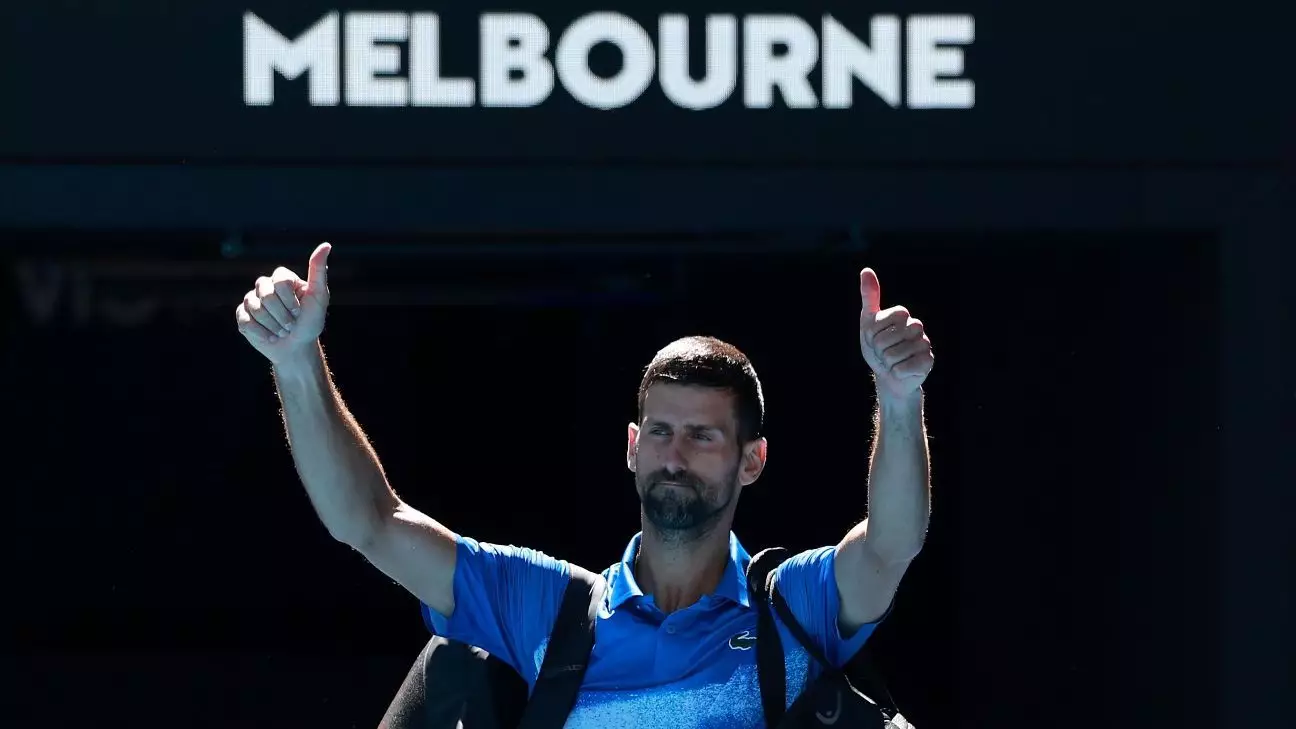Novak Djokovic, the esteemed 24-time Grand Slam champion, faced a significant setback during the Australian Open semifinals, abruptly halting his quest for another title due to a left hamstring injury. On Friday, after completing only one set against Alexander Zverev, Djokovic retired from the match—a moment that not only shocked his supporters but also led to a chorus of boos echoing from the Rod Laver Arena. Such a reaction reflects the high expectations surrounding a player of Djokovic’s stature, yet it also raises questions about the public’s understanding and empathy for athletes enduring physical distress.
In the aftermath of his early exit, Djokovic took to social media, sharing an MRI scan of his injured hamstring. This move served as a subtle rebuttal to the “sports injury experts” who were quick to criticize his decision to leave the court. By posting the scan, Djokovic aimed to provide some transparency regarding his condition, though he refrained from divulging specifics about the injury severity or recovery timeline. This choice to remain vague may provoke further scrutiny, as fans and analysts alike ponder the nature of his ailment and what it means for his future in the tournament and beyond.
Support Amidst Controversy
The crowd’s reaction during his exit highlights not just a clash between expectations and reality, but also the passion of tennis fans who invest emotionally in matches. In a moment of unity, Zverev spoke out against the booing, reminding the audience of Djokovic’s immense contributions to the sport over the last two decades. His defense underscored the delicate balance between fan fervor and respect for athletes who have dedicated their lives to excellence. The need for compassion in sports—particularly for those who are visibly struggling—cannot be understated.
Djokovic’s injury raises critical discussions about the physical demands placed upon athletes at the highest level. He had shown signs of trouble even before the semifinal, having played a grueling four-set match against Carlos Alcaraz in the quarterfinals, where tape was noticeable on his upper left leg. Djokovic’s comments following his retirement reveal a competitor’s mindset—one that insists on pushing through pain to deliver performances expected by fans and stakeholders. However, this mentality can sometimes lead to exacerbated injuries, as evidenced by his situation.
Future Implications for Djokovic
Looking ahead, the ramifications of his injury could critically impact Djokovic’s career trajectory, particularly as he navigates the latter stages of his professional life at 37 years old. The timeline for recovery remains uncertain, and with each passing Grand Slam, questions about longevity, efficacy, and health will loom larger. In a sport as competitive and unforgiving as tennis, Djokovic’s injury not only affects his personal legacy but also the landscape of the sport itself, as new contenders rise to fill the void he may leave behind.
Djokovic’s Australian Open journey exemplifies the myriad complexities athletes face. As they strive for greatness, the intersecting paths of physicality, public expectation, and personal sacrifice come into sharp focus—a reminder that behind every match is a human being wrestling with painful realities.

